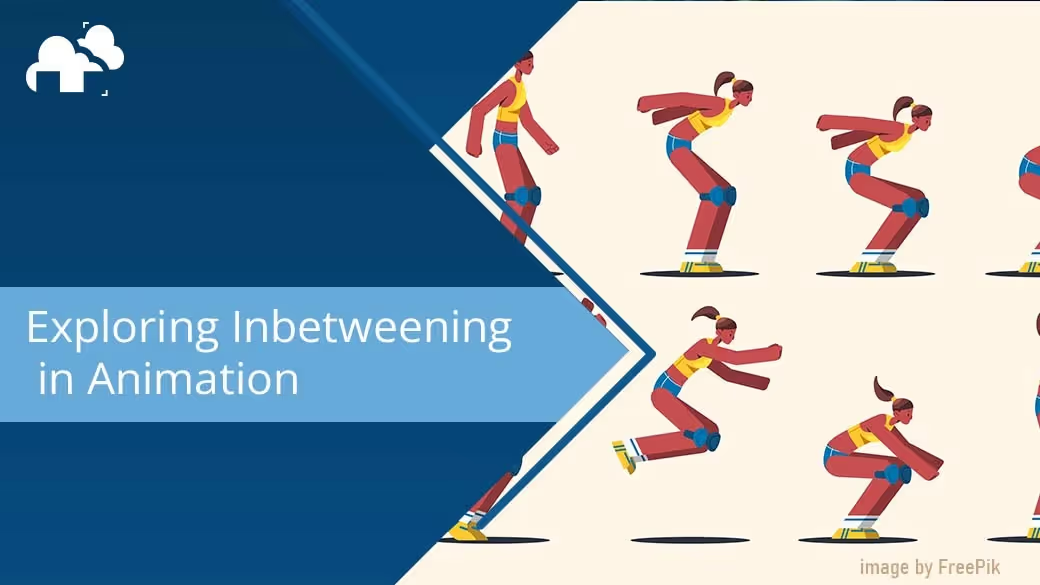
Animation, whether traditional or computer-based, relies on various techniques to create the illusion of motion. One of the most vital is inbetweening, or tweening, where frames are generated between keyframes to create smooth transitions and fluid motion.
In this guide, we’ll explore inbetweening’s definition, historical context, importance, and how technology is reshaping its future. From traditional paper-based animation to modern 3D graphics, understanding inbetweening is crucial for animators of all levels.
Inbetweening, or tweening, involves creating frames between two keyframes to produce movement. Keyframes define the start and end points of transitions, while inbetween frames smooth out these transitions, resulting in fluid motion. In 2D animation, for example, keyframes might capture a character’s starting and ending poses, with inbetweens filling the gap, creating natural movement.
Scott Petersen sheds light on inbetweening and its importance in traditional animation in his video on the subject:
Inbetweening originated in traditional animation, popularized by studios like Disney, where key animators created the primary frames, and assistant animators drew the inbetweens. Pioneers like Ub Iwerks and Winsor McCay helped establish the technique. This process allowed animation to evolve from basic, choppy motion to the smooth, fluid actions we see in classic films.
At its core, inbetweening creates the illusion of continuous motion. Without it, animation would appear jarring, with objects "jumping" from one position to another. Whether done by hand or via computer algorithms, the goal is to generate fluid motion between keyframes.
In traditional animation, inbetweening was labor-intensive, but in modern computer animation, software like Adobe Animate or Blender automates much of the process. However, the skill of inbetweening remains vital to ensure that these automated frames enhance, rather than diminish, the animation’s quality.
In 3D animation, characters and objects interact with their environment in complex ways. While software can generate inbetweens, it’s the animator’s responsibility to ensure the interpolation feels natural. Improperly managed inbetweening can lead to stiff, robotic motion. A strong understanding of timing and ease-in/ease-out transitions allows animators to create more lifelike movements, whether a character is running or throwing an object.
Inbetweening also adds the small, often overlooked nuances that make a character’s performance believable. The slight tremor of a hand or the shifting of weight before a leap relies on effective inbetweens. Animators can use this technique to enhance the emotional depth of a scene.
Inbetweening plays a crucial role in animation principles like anticipation, follow-through, and overlapping action. For example, follow-through ensures that a character’s motion doesn’t abruptly stop, and anticipation sets up major actions. Without well-executed inbetweens, these principles would lose impact.
In 3D animation, software tools like Blender or Maya automatically calculate inbetween frames based on keyframes, but the results can sometimes feel too linear or unrealistic. Animators must refine these interpolations to add weight and dynamic motion, especially in arcs like a bouncing ball’s path. Adjusting the interpolation curves creates more dynamic, believable animations.
Inbetweening is often combined with rigging systems and physics simulations in 3D animation. For instance, complex rigs with facial or hand controls rely on precise inbetweening for natural performance. When working with physics simulations, such as cloth or hair, accurate inbetweens ensure that interactions with the character or environment are seamless and believable
See how Pierick Picault explains inbetweening in the context of 3D animation and notice the parallels between his explanation and Scott’s from the video earlier:
Even with AI-driven tools, learning traditional inbetweening methods remains valuable. It teaches essential skills like timing, spacing, and arcs, which are crucial for both 2D and 3D animation. Early Disney animators manually created all inbetweens, resulting in animations with emotional depth and polished movement. This attention to detail helps 3D animators stand out, even when using automated tools.
To grow as an animator, practice inbetweening actively, even with the help of software. Here are ways to develop your skills:
Inbetweening works by defining keyframes for critical poses, then generating intermediate frames to smooth transitions. In traditional animation, these frames were drawn by hand. In 3D animation, software calculates the required frames based on parameters like motion, rotation, and scale. Animators adjust these parameters to ensure the smoothest transitions.
Keyframes mark the most important moments or poses in a sequence, such as a character’s major movements or object interactions. Inbetween frames refine these transitions, ensuring a coherent and smooth animation sequence.
Inbetweening is essential for creating smooth morphing sequences or subtle character movements. In 2D animation, it helps with fluid action, while in 3D animation, it aids character motion and object manipulation.
Even with the automation of many inbetweening tasks, animators must still master the fundamentals to fine-tune transitions and bring their artistic vision to life.
Advancements in AI and machine learning have made inbetweening faster and more accessible. AI-powered tools can now generate inbetweens, allowing animators to focus on creative tasks. Tooncrafter is one such tool, but beginners should be careful not to eschew learning the traditional techniques, as ultimately they must still refine these frames for optimal results.See AI Search’s feature of Tooncrafter in this video:
To master inbetweening, animators need a solid grasp of timing, spacing, and motion. Proficiency in tools like Adobe Animate, Blender, and Toon Boom Harmony is essential. Despite AI advancements, traditional inbetweening techniques remain valuable for creating expressive, nuanced animations.
Maintaining consistency across frames and ensuring fluid motion are common challenges. Practice is crucial, as is attention to timing and spacing. Familiarity with interpolation techniques and AI tools will help in mastering the craft.
Inbetweening ensures smoother animations, realistic motion, and greater focus on key creative decisions. However, common challenges like awkward transitions or inconsistent timing can be overcome with reference footage and animation software tools.
Inbetweening is the backbone of animation, bridging the gap between keyframes and creating fluidity. Whether you're working with traditional methods or AI-driven tools, mastering inbetweening is essential for producing high-quality 2D and 3D animations.